Treatment
Age-related macular degeneration (AMD)
The treatment offered at Vision Pros Ophthalmology Clinic for age-related macular degeneration includes prescribing nutritional supplements, lifestyle changes, low vision aids, and eye injections.
The most effective measure you can take to preserve your vision as you get older is to get your eyes examined regularly by an experienced ophthalmologist who will be able to inform you when new AMD treatment procedures are approved.
Treatment types
Age-related macular degeneration (AMD) treatment offered at Vision Pros Ophthalmology Clinic includes the following:
- Nutritional supplements
- Lifestyle changes
- Low-vision aids
- Injections

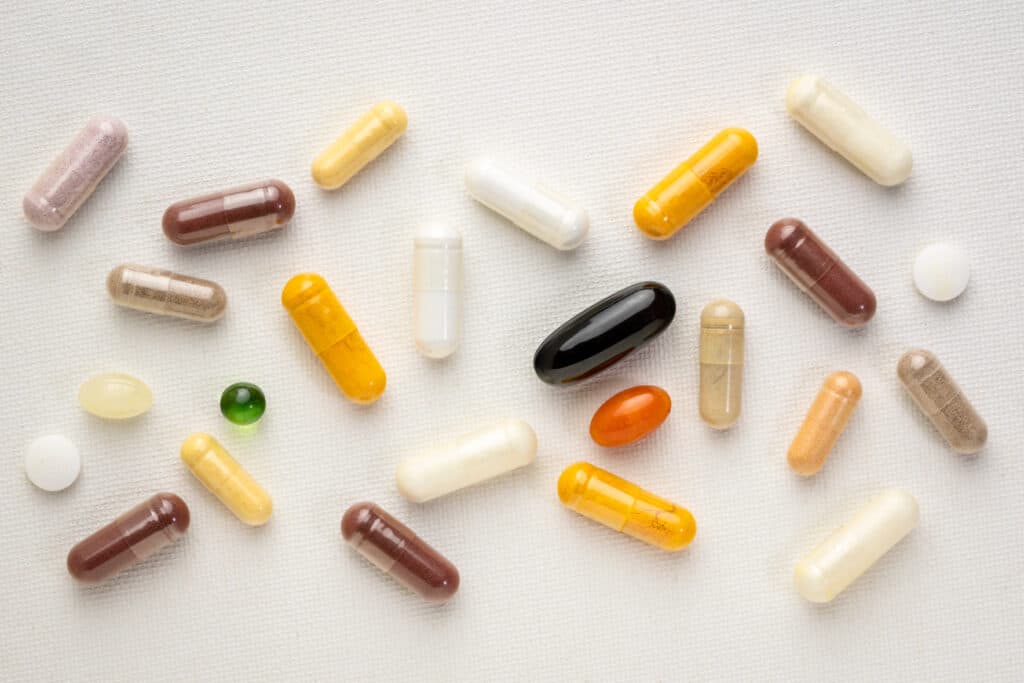
Nutritional supplements
Nutritional supplements to treat age-related macular degeneration include AREDS and AREDS 2 supplements, named after the Age-Related Eye Disease Study conducted in 19991.
A 5-year study conducted by Dr. Emily Chew of the National Eye Institute found that participants with an early-stage AMD diagnosis were 25% less likely to develop advanced AMD when they took AREDS dietary supplements.
AREDS supplements contain the following antioxidant vitamins and minerals:
- Vitamin C
- Vitamin E
- Zinc
- Copper
AREDS supplements combined with leafy green vegetables and fish lowered the risk of advanced age-related macular degeneration in this study’s participants.
AREDS2 supplements no longer contain omega-3 fatty acids (found in oily fish) but include lutein and zeaxanthin, and this new combination proved 20% more effective at reducing the progression of AMD than AREDS nutritional supplements (need to verify)
Note that your ophthalmologist may recommend that if you’ve been diagnosed with a more advanced form of AMD, lifestyle and dietary changes may be more effective at slowing down and preventing further central vision loss.
Lifestyle changes
While AREDS2 supplements help preserve your central vision if you’ve been diagnosed with age-related macular degeneration, lifestyle changes may help prevent AMD from occurring in the first place.
The changes you can make to your lifestyle and diet to prevent or slow down AMD include the following:
- Quit smoking to reduce the risk of developing AMD in the first place.
- Eat lots of vegetables, whole grains, fish, and olive oil.
- Regularly monitor your eyesight and report any changes to your ophthalmologist.
- Exercise regularly as activities that protect the health of your heart also benefit the health of your eyes.


Low-vision aids
Your ophthalmologist or optometrist may recommend that you use low-vision aids if you’ve been diagnosed with age-related macular degeneration and experience reduced central vision.
Low vision aids include the following:
- Electronic magnifiers
- Hand-held magnifiers
- Stand magnifiers
- Magnifying glasses
- Wearable magnifying devices
- Low vision lamps
- Daily living aids such as large-print reading material, high-contrast computer keyboards, and talking scales
Injections
Injections are also available to treat forms of neovascular or wet age-related macular degeneration.
The most recommended AMD injections include antiVEGF drugs or VEGF inhibitors.
In neovascular AMD, an overproduction of vascular endothelial growth factor (VEGF) results in uncontrolled growth of the blood vessels underneath or within the Macula.
VEGF inhibitor injections are a first-line treatment option for wet AMD because they inhibit this growth factor, causing the abnormal blood vessels to regress reducing or completely shutting down exudative activity altogether. If diagnosed and treated in a timely manner, permanent scarring of the macula may be avoided, with a much better visual prognosis.
Depending on the stage and type of wet AMD, your ophthalmologist may recommend one of the following VEGF inhibitors:
- Ranibizumab (Lucentis®)
- Aflibercept (Eylea®)
- Bevacizumab (Avastin®)
- Faricimab (Vabysmo®)
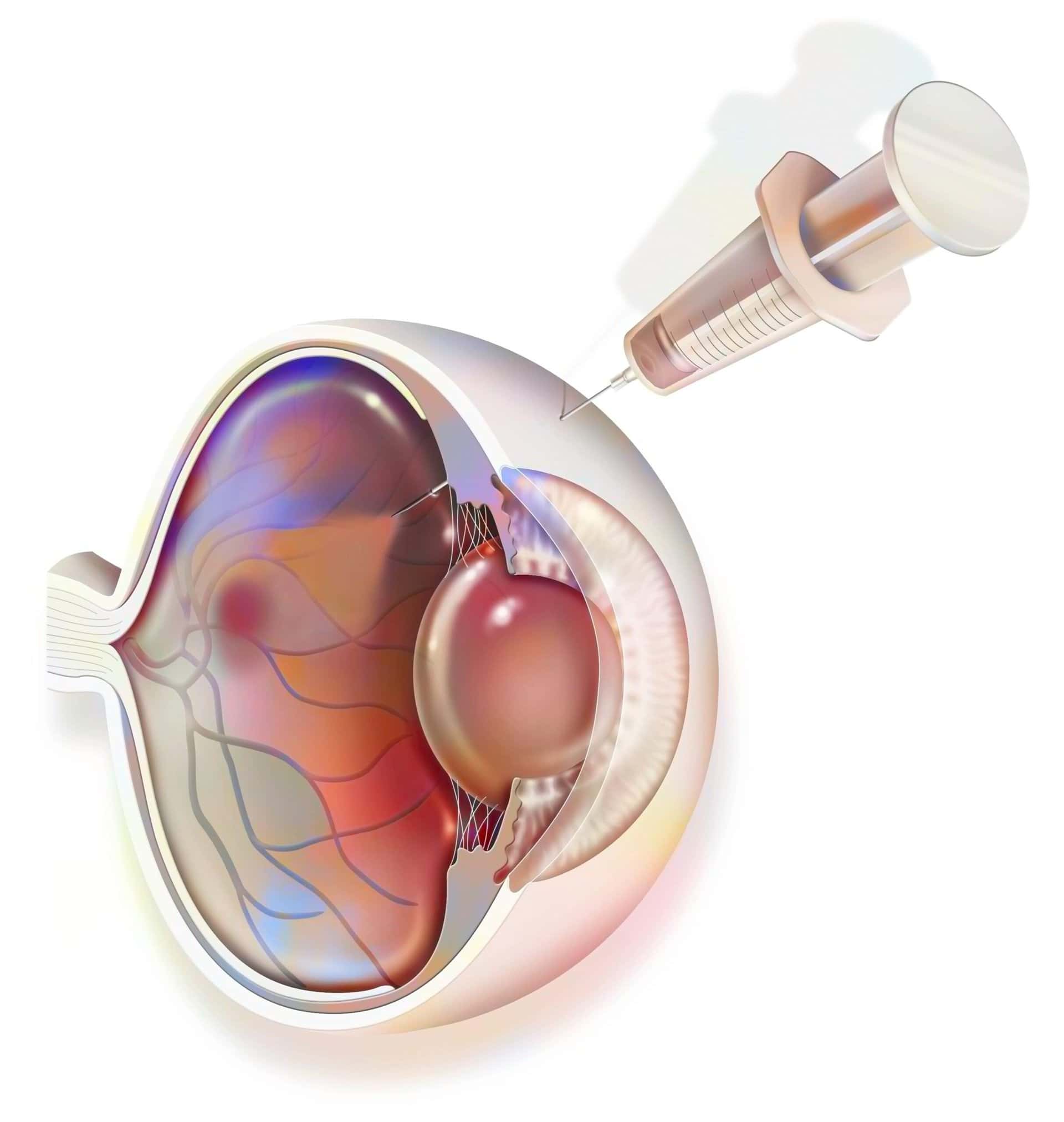
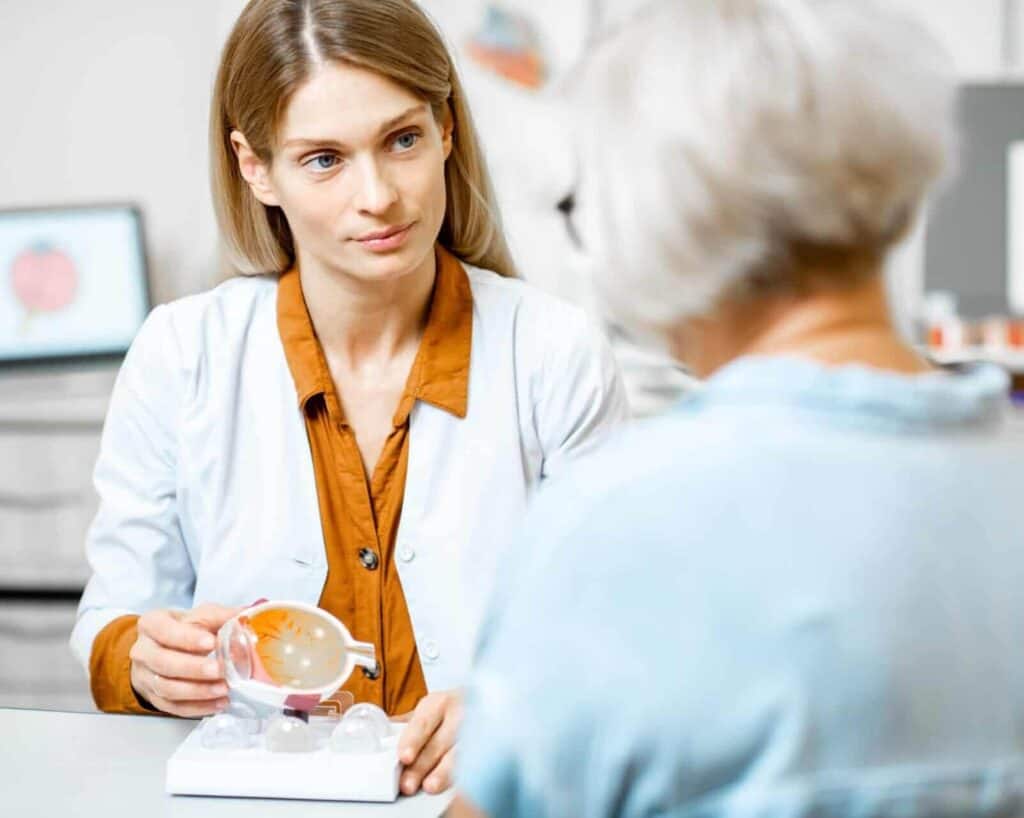
Risks of Intravitreal Injections
An injection for age-related macular degeneration is an outpatient procedure. It is a relatively safe intervention with a minimal chance of severe side effects (about 1/2000). Some common but not dangerous side effects include sub-conjunctival hemorrhage, irritation, and foreign body sensation. The risk of infection is low (1/2000), but it is a serious complication that poses a risk of permanent visual loss or damage. Other rare risks include:
- Intraocular inflammation (inflammation inside the eye)
- Retinal detachment (damage to the retina)
- Traumatic lens damage
- Intraocular hemorrhage (bleeding inside the eye )
- Sustained ocular hypertension (increased pressure inside the eye which may result in glaucoma)
What happens during the VEGF inhibitor procedure?
Here’s what happens during VEGF inhibitor injection treatment:
1.
Before seeing the doctor, a technician will record your vision, and pressure, before dilating your pupil(s), and performing an OCT scan of your maculas.
2.
The ophthalmologist will apply eye drops to numb your eye, and iodine drops will be used to prevent infection. The doctor can always freeze your eyes using other techniques depending on your wishes. Your eye(s) will be kept open with a small speculum.
3.
The ophthalmologist will inject the medicine into the eye.
4.
Your eye(s) will be rinsed multiple times with artificial tears to remove all traces of iodine. You will be given a sample of artificial tears to use as needed if any irritation.
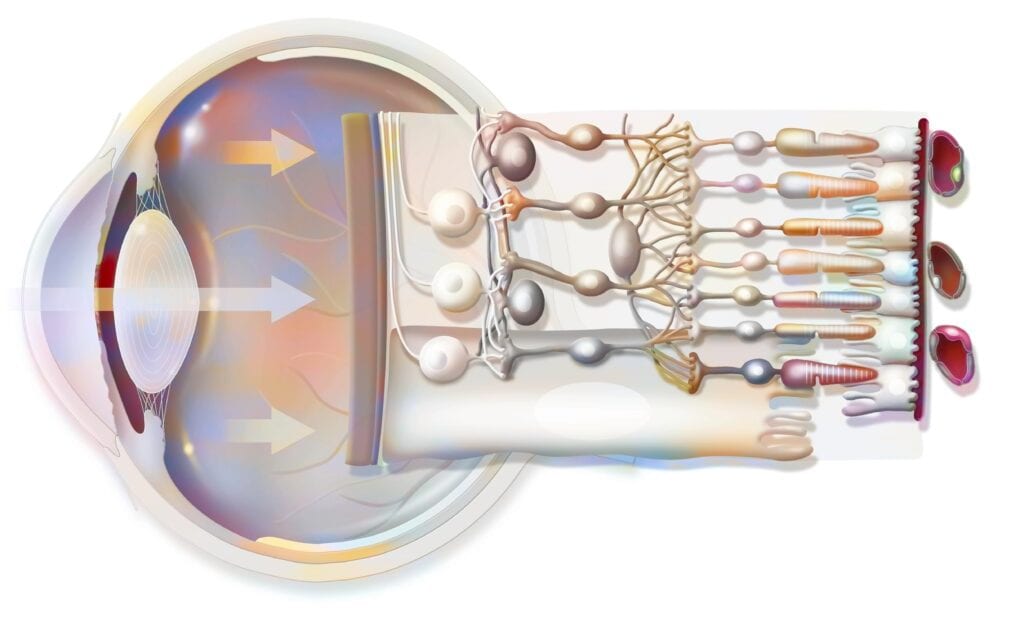
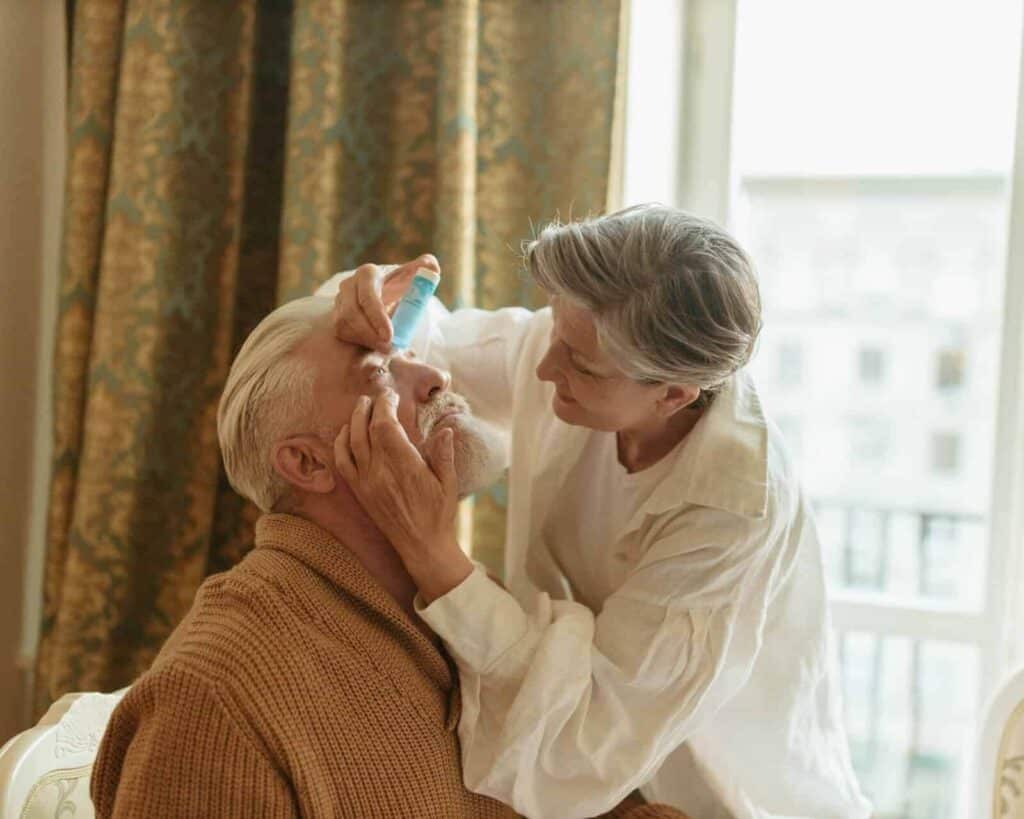
Recovering from AMD treatment
Recovering from injections should take a few days to a few weeks.
Follow-up treatment after an eye injection:
- Apply eye drops and medications according to the schedule prescribed by your ophthalmologist.
- You may experience painful and itchy eyes, but it’s important to avoid rubbing your eyes to prevent infection and damage to your eyes.
- It is not uncommon to see blood on the whites of your eyes after an injection. This is called a subconjunctival hemorrhage and is very superficial and will resolve in a matter of days or weeks.
- Avoid driving while your pupils are dilated.
- Avoid getting your eye(s) wet with water, including but not limited to bath, shower, swimming pool, lake, etc for 72 hours after an eye injection to avoid infection.
Contact your ophthalmologist if you notice any of the following as they could be signs of infection:
- Extreme pain in your eye
- Redness
- Significant decrease in vision
The chance of having an infection after an eye injection (also known as endophthalmitis) is very low (about 1/2000). This will typically manifest 48 hours after an injection, so discomfort the day of the injection is never due to an infection from the injection.
Note that you may have varying degrees of irritation or red spots on the eye, blurry vision and itchy, teary, red eyes after an injection.
These side effects are usually temporary, and your ophthalmologist may recommend soothing, preservative-free eye drops.
For any concerns related to your aftercare, contact Vision Pros during office hours. If you require emergency assistance after hours, please consult with your local emergency without delay.
Why choose Vision Pros to treat your AMD?
- Experienced ophthalmology team of specialists with expertise in all areas of ophthalmology, optometry, and general eye care.
- Rapid access and referral to world-class comprehensive screening and cutting-edge treatment in a state-of-the-art ophthalmology clinic.
- Holistic, personal, and patient-centric approach to every aspect of eye care.
Schedule your comprehensive AMD examination today
- https://youtu.be/XwDZBu_M3UU
- https://youtu.be/2r-dCGTDQRs
- https://irp.nih.gov/our-research/research-in-action/how-to-feast-for-your-eyes
- https://www.medret.ca/treatment-via-intravitreal-injection/
- https://opto.ca/eye-health-library/amd-age-related-macular-degeneration#:~:text=Currently%2C%20dry%20AMD%20is%20treated,to%20stop%20leaking%20blood%20vessels.
- https://www.ophthalmologytimes.com/view/health-canada-approves-faricimab-injection-for-the-treatment-of-wet-amd-dme
- https://www.ncbi.nlm.nih.gov/pmc/articles/PMC1473211/
- https://pubmed.ncbi.nlm.nih.gov/26040791/
- https://lowvisionsource.com/low-vision-aids-for-macular-degeneration/
- https://www.hopkinsmedicine.org/health/treatment-tests-and-therapies/photodynamic-therapy-for-agerelated-macular-degeneration
- https://www.mayoclinic.org/diseases-conditions/dry-macular-degeneration/diagnosis-treatment/drc-20350381#:~:text=Kale%2C%20spinach%2C%20broccoli%2C%20squash,for%20people%20with%20macular%20degeneration
- https://www.aao.org/eyenet/article/how-to-give-intravitreal-injections#:~:text=We%20recommend%20the%20following%20steps,injection%20site%20prior%20to%20injection